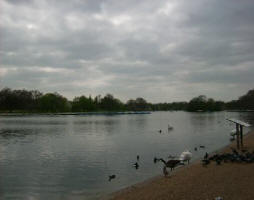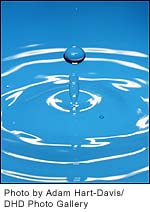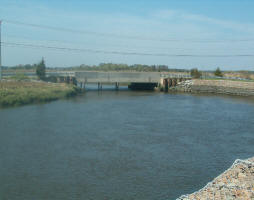 Institutions for Transboundary Rivers : the Akkar Watershed in Syria and Lebanon
Institutions for Transboundary Rivers : the Akkar Watershed in Syria and Lebanon
The Akkar watershed, which forms the northern border between Lebanon and Syria, is under severe stress. Since 1996, Lebanese and Syrian officials, with funding from Canadian and American agencies, have been working on the design and implementation of a watershed management protocol. Early work examined management methods and institutions in the two countries while later work focused on technical exchanges. This project will explore alternative institutional arrangements for joint management of the transboundary river in such a way as to promote sustainable land and water use. Researchers will examine the impact of land use on water quantity and quality under a variety of climatic conditions, and consider the resilience of any proposed institutional arrangement to the stresses and demands occasioned by extended periods of drought. Ideally, the project will result in a watershed-specific political agreement that can provide a model for other shared and transboundary waters in the Middle East.
| Project number | 004566 | ||
|---|---|---|---|
| Subject(s) | DRINKING WATER , HYDRAULICS - HYDROLOGY , POLICY-WATER POLICY AND WATER MANAGEMENT , RISKS AND CLIMATOLOGY , WATER QUALITY | ||
| Geographical coverage | Syria, Lebanon | ||
| Budget (in €) | 316965 | ||
| Programme | ENRM | ||
| Web site | http://www.idrc.ca/en/ev-83273-201_004566-1-IDRC_ADM_INFO.html | ||
| Objectives | The original objective of evaluating legislation and institutional arrangements was revised when it was realized that legislative and ministerial responsibilities were in the process of being re-assessed and realigned in both countries. Instead, the focus of the project shifted toward local conditions and public awareness. Researchers gathered data on water quality and seasonal variability, surveyed inhabitants' attitudes and organized public workshops. Together with the Fares Foundation of Lebanon, they instituted a public awareness program in the watershed. Remote sensing agencies provided 1:50 000 maps of the watershed covering drainage, geology, land use, soil erosion, utilities, settlements, roads and railways. One surprising finding of the research was that there is an "enviable" supply of water in the Akkar region, arguably enough to meet all perceived needs for the foreseeable future. However, with pollution levels that far exceed any internationally accepted standards for irrigation use, the quality of the water in the El Kabir seriously compromises the supply. Water quality surveys revealed extremely high levels of bacterial and organic pollution throughout the watershed. A series of priorities were suggested in three phases of implementation. The first phase called for immediate action on solid waste and sewage cleanup, plus the elimination of the use of DDT and other banned agro-chemicals. The intermediate phase would consist of efforts to change the attitudes and behaviour of the watershed population with respect to waste disposal, pesticide and fertilizer use, and animal access to the river, along with the implementation of community sewage treatment plants. The third stage called for an overall approach to binational management of the basin involving institutional arrangements, sharing agreements, and development of strategic plans for groundwater and surface water conservation and protection. The project findings were presented to a technical and professional audience at a special session at the General Organization of Remote Sensing (GORS) Annual Symposium in Damascus, Syria, in December 2002. Summaries of the presentations and briefing notes were provided to environmental and water agencies and to the Fares Foundation for broad dissemination. A presentation was made at the 24th Canadian Symposium on Remote Sensing in Toronto, Canada, in June 2002 and published in the proceedings (Khawlie et al 2002). The conclusions were summarized in short brochures and posters, which were distributed throughout the watershed, and featured in articles in Arabic and English newspapers. Five hours of digital video was condensed into a 30-minute video for Arabic and English television. | ||
| Period | [15/07/2003 - 30/03/2004] | ||
 you are not logged in
you are not logged in





